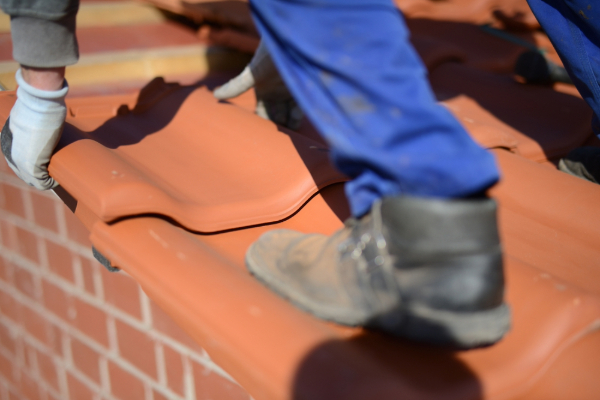Choosing the Right Roofing Shoes
You may take them for granted, but roofing shoes are one of the most important pieces of equipment for commercial and residential roofers. Every time a roofer goes to work, they risk foot injuries caused by dropped objects, cutting and crushing machinery, corrosive materials and stepped-on nails. Without good roofing shoes, roofers also risk fall injuries.
It's not the brand or price of construction footwear that matters as much as certain key safety features. Follow a few pointers to help you and your crew find head-to-toe protection.

OSHA Footwear Standards
OSHA recognizes that serious foot injuries can occur in any construction trade, and has standards that deal specifically with protective footwear: OSHA Standard 1910.136 General Industry and 1926.96 Construction.
While these standards only offer minimal guidance as to what features roofing shoes should have, they do refer to national and global quality standards from the American National Standards Institute (ANSI) and ASTM International. The latest versions of the ASTM footwear guidelines are F2412-24 and F2413-24
-18; they cover everything from impact protection to static electricity resistance. Protective footwear (including the work boots your roofers buy at the local discount mart) must be constructed to meet the specific safety measures of one or more of these standards.
Avoid Foot Injuries with the Right Roofing Shoes
Not all protective shoes are made the same, however. Here are a few key features to look for:
- Good traction. Roofers work on all types of surfaces — asphalt, metal, wood and slate — many of which are steep and slippery. You want shoes with non-slip soles that will grip any surface. Rubber outsoles have an excellent grip, especially on asphalt and metal roofs.
- Durability. Some roofers are skeptical of expensive shoes, but this isn't the place to scrimp. Spend the money to get a high-quality outsole and a shoe with sturdy stitching and steel toes. They won't get damaged as quickly, and will probably save your roofers a little dough as well as painful foot injuries in the long run.
- A comfortable fit that is secure, breathable and flexible. Your workers can't be productive when they're working 10 to 12 hours a day with sweaty and swollen feet. Shoes should keep workers' feet cool and dry, and preferably have shock-absorbing footbeds. A pliable, rugged leather will give the flexibility needed for those awkward squatting and kneeling positions.
- Puncture resistance. There are many tools and supplies on a jobsite that can puncture the sole or even the side of a roofer's shoe. Shoes with a puncture-resistant plate will better protect your roofers' feet from scrap, splinters and stray tools.
- Electricity resistance and static dissipation. If roofers are working around electricity, they should look for shoes that can withstand electric shocks and protect them from the hazards posed by static electricity.
Other features are up to your roofers. Some might prefer lightweight shoes, while others might want something waterproof, especially if they work in rainy, wet environments.
The bottom line is that personal protective equipment, including footwear, can help your roofers avoid hazards and stay productive and healthy. Every worker needs shoes — take it a step further and choose the ones best suited for the job.
Shoes aren't the only pieces of equipment your team needs to stay safe. Find the right tools at QXO.